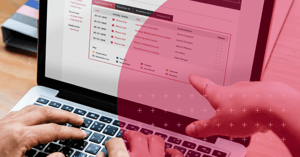Successful stakeholder management depends on good data, structured processes and insightful analytics.
And trying to make sense of large volumes of data, possibly from multiple systems and spreadsheets across departments, can be a nigh on impossible task.
Using proper stakeholder management software will offer many benefits and reduce risks.
However, before you decide to use stakeholder management software, there are a few key points you need to bear in mind:
- Stakeholder management tools are an enabling technology. They will not run the project for you;
- Choosing a stakeholder management solution is a preliminary project. In many cases, it is the first thing you need to get done so you can have continuity throughout the entire effort;
- Planning begins well in advance of project initiation and should be done with your stakeholder management tool in mind. Speak to the supplier and see if they can help you to understand how their system fits into your overall plan.
It is important to enter into the task of choosing a stakeholder management tool using a disciplined and analytical mindset.
There are many technology options in the market, and they can boggle the mind through their slick marketing tactics to the point of influencing you into making a hasty decision. As a rule, decisions made in haste will come back to haunt you later in the project.
So, what are the important criteria that will allow you to whittle down the selection of a stakeholder management system to a manageable and relevant choice?
Here are four factors to consider:
1. Cost vs. Functionality
The power and degree of control needed for your choice of a tool hinge on the answers to these questions:
- What is your budget?
- How big is the project team?
- Who will be managing the software?
- Do the tools included in the software cover all your management needs?
Tools such as the industry-standard Microsoft Project implemented in a SharePoint cloud environment costs thousands to acquire and isn’t built for stakeholder management.
A tool that’s built with your specific needs in mind is essential for effective stakeholder engagement.
One of the biggest returns from implementing stakeholder management software is the cost savings due to an increase in efficiency in performing various project tasks.
Its benefits far outreach the annual costs for the software. In addition, it eliminates all the additional subscription costs for multiple 3rd party subscriptions such as email providers, event hosting platforms and survey tools.
2. Capability vs. Ease of Use
The more capable the tool is, the higher the learning curve is going to be.
Remember that your entire project team will have to be able to use the tool at some level.
- What setup and startup support can you expect?
- Is there a structured onboarding plan in place?
- Does the software provider offer free training?
- Does that training save you the expense of hiring an expert to help you use the tool?
A stakeholder management system is easier to use than having to work with multiple different tools. Because it centralises all information, it facilitates communication between teams and improves understanding.
Moreover, a single central resource for all stakeholder information delivers an easily accessible audit of all historical activity to better inform future strategies.
3. Documentation and Ongoing Technical Support
Consider the quality of the documentation you’ll receive, if the contract is flexible and if it can be renewed annually.
Understand what are the long-term technical assistance, regular feature upgrades and bug fix policies the potential vendor provides.
Good ongoing technical support should include further training, refresher courses, an online knowledge bank with how-to videos, and a dedicated account manager that can be contacted during working hours.
Stakeholder management software providers that also offer to create bespoke reports upon request to meet specific KPI’s at no additional cost is also a plus.
4. Data Security
You might have to protect personally identifiable information (PII), store sensitive documents and intellectual property.
If so, choosing a stakeholder management software that allows confidence when storing data and ensuring conformity to major technical standards is crucial.
Unlike spreadsheets or similar tools, SaaS solutions like stakeholder management software can offer industry-leading security infrastructure by utilising best in class hosting methods and security controls.
In terms of security, shifting to a stakeholder management tool will:
- Provide confidence in compliance with GDPR;
- Remove the risk of data being duplicated, lost or manipulated;
- Reduce the risk of a serious breach in security.
Make sure to learn if the software provider you are considering offers:
- Secure data centres;
- Encrypted data and connection;
- Server backups;
- ISO9001 & ISO27001 standards.
Choosing a Stakeholder Management Software
It is important to ask the tough questions when evaluating potential vendors.
Always perform your due diligence on any stakeholder management software package you’re considering buying. You won’t be sorry you did your homework.
Tractivity can transform how you manage stakeholder relationships and engagement.
Discover why many organisations such as EDF Energy, GWR, SSEN, City of London and the NHS have chosen our system to deliver better outcomes. Book a free demo with us today.

